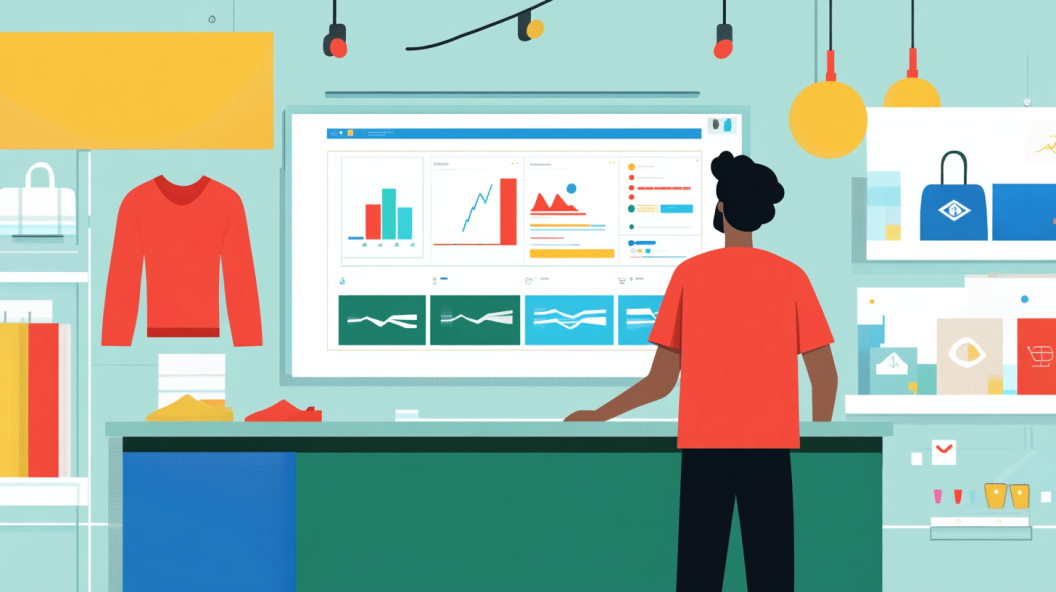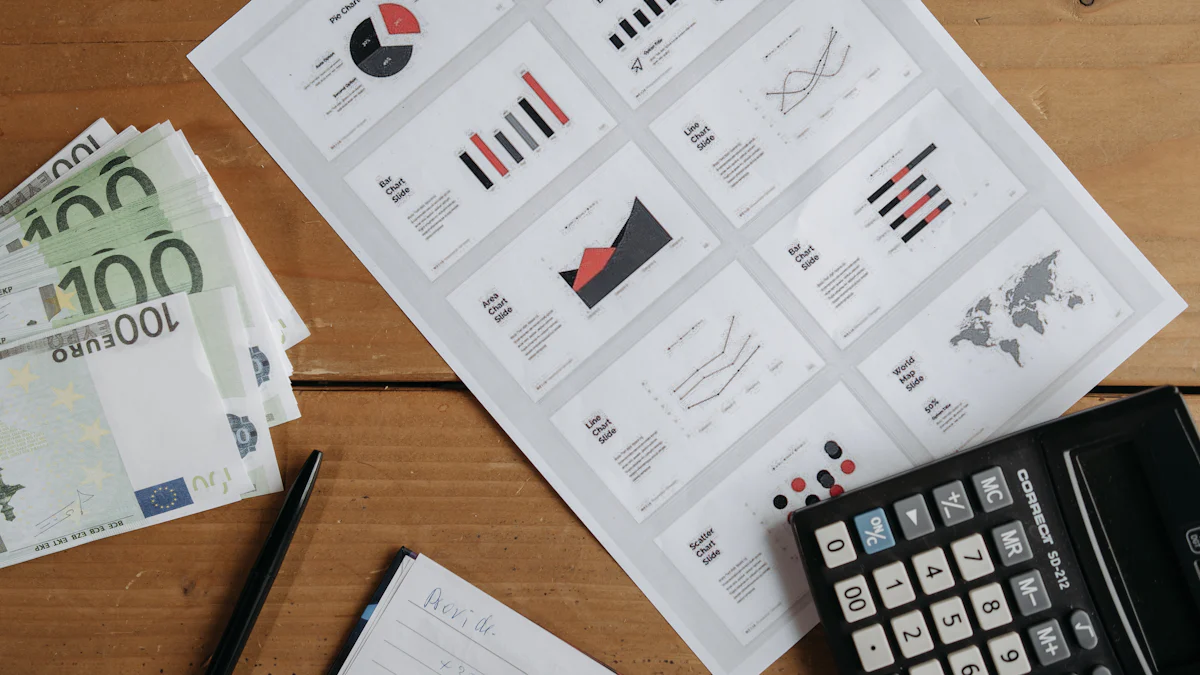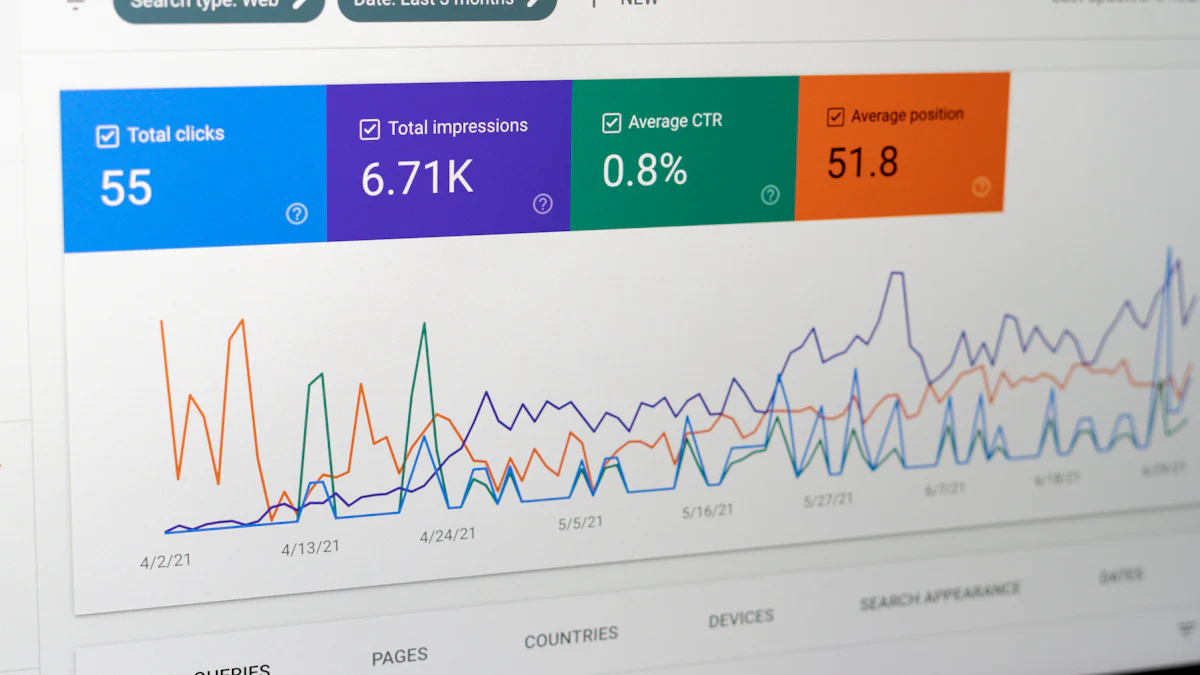How Microsoft Power BI is Helping Retailers Make Data-Driven Decisions

In today's competitive retail landscape, making data-driven decisions is crucial for success. Retailers who harness the power of data can optimize operations, enhance customer experiences, and gain a competitive edge. According to a survey, 62% of retailers believe that data analytics provides them with a significant advantage. By understanding customer behavior and preferences, you can create personalized marketing strategies and improve engagement. Microsoft Power BI emerges as a powerful solution, transforming raw data into actionable insights. Its interactive dashboards offer a visual representation of key performance indicators, sales metrics, and customer trends, empowering you to make informed decisions.
Understanding Microsoft Power BI
Key Features of Microsoft Power BI
Microsoft Power BI offers a range of features that empower you to make informed decisions. One of its standout features is the creation of Interactive Dashboards. These dashboards allow you to visualize data in real-time, providing a clear picture of your business metrics. You can easily drag and drop elements to customize these dashboards, making them both user-friendly and visually appealing.
Another essential feature is Data Connectivity. Power BI connects to a wide variety of data sources, enabling you to gather information from different platforms seamlessly. This connectivity ensures that you have access to comprehensive data, allowing for a more holistic analysis.
Integration with Other Microsoft Tools
Power BI integrates effortlessly with other Microsoft tools, enhancing its functionality. The Seamless Integration with Excel allows you to import and analyze data directly from Excel spreadsheets. This integration makes it easy to transition from familiar tools to more advanced analytics without losing any data.
Additionally, Power BI supports Collaboration with Teams. You can share insights and dashboards with your team members, facilitating collaborative decision-making. This feature ensures that everyone stays informed and aligned with the latest data insights, promoting a unified approach to business strategies.
Setting Up Power BI for Retail
Setting up Microsoft Power BI for your retail business involves a few straightforward steps. This process ensures you can harness the full potential of data analytics to drive your business forward.
Initial Setup and Configuration
Account Creation
To begin, you need to create an account with Microsoft Power BI. Visit the Power BI website and sign up using your business email. This account will serve as your gateway to accessing powerful analytics tools. Once registered, you can explore various features and start building your dashboards.
Data Source Connection
Connecting your data sources is crucial. Microsoft Power BI allows you to link a wide variety of data sources, such as Excel files, cloud services, and databases. Navigate to the "Get Data" section in Power BI and select the sources relevant to your retail operations. This connection ensures you have comprehensive data at your fingertips, enabling detailed analysis.
Customizing Dashboards for Retail Needs
Retail-Specific Templates
Microsoft Power BI offers retail-specific templates to streamline your setup. These templates provide pre-designed layouts tailored to common retail metrics like sales performance and inventory levels. By using these templates, you can quickly visualize key data points without starting from scratch.
Custom Visualizations
Creating custom visualizations enhances your ability to interpret data. Microsoft Power BI supports a variety of visualization options, including column charts, pie charts, and heat maps. Use the drag-and-drop functionality to design dashboards that reflect your unique business needs. These visualizations transform raw data into actionable insights, helping you make informed decisions swiftly.
By following these steps, you can effectively set up Microsoft Power BI for your retail business. This setup empowers you to explore data, create insightful reports, and share findings with your team, fostering a data-driven culture.
Analyzing Retail Data with Microsoft Power BI
Analyzing retail data becomes straightforward with Microsoft Power BI. This tool transforms raw data into actionable insights, helping you make informed decisions swiftly.
Sales Data Analysis
Identifying Trends
With Microsoft Power BI, you can easily identify sales trends. The interactive dashboards allow you to visualize data patterns over time. By examining these trends, you can understand which products perform well and which need attention. This insight helps you adjust your strategies to maximize profits.
Forecasting Sales
Forecasting sales becomes more accurate with Microsoft Power BI. The tool uses historical data to predict future sales patterns. You can create models that consider various factors like seasonality and market changes. This foresight enables you to plan inventory and marketing efforts effectively.
Customer Insights
Demographic Analysis
Understanding your customers is crucial. Microsoft Power BI provides tools for demographic analysis. You can segment your audience based on age, location, and preferences. This segmentation helps you tailor your marketing strategies to meet specific customer needs.
Customer Behavior Patterns
Analyzing customer behavior patterns is essential for enhancing customer experience. Microsoft Power BI allows you to track purchasing habits and preferences. By understanding these patterns, you can offer personalized promotions and improve customer satisfaction.
Microsoft Power BI empowers you to transform complex data into clear insights. Its integration with other Microsoft tools enhances collaboration and data sharing. By leveraging these capabilities, you can drive your retail business forward with confidence.
Enhancing Inventory Management

Effective inventory management is crucial for retail success. Microsoft Power BI offers tools that help you optimize stock levels and predict demand trends. By leveraging these capabilities, you can improve efficiency and customer satisfaction.
Real-Time Inventory Tracking
Stock Level Monitoring
Monitoring stock levels in real-time is essential for maintaining optimal inventory. Microsoft Power BI provides interactive dashboards that display current stock levels across all locations. You can quickly identify which items are running low and need replenishment. This visibility helps you avoid stockouts and ensures that popular products are always available for customers.
Automated Alerts
Automated alerts are a powerful feature of Microsoft Power BI. You can set up notifications to alert you when stock levels fall below a certain threshold. These alerts enable you to take immediate action, such as ordering more stock or adjusting marketing strategies. By staying proactive, you can prevent potential sales losses and maintain a smooth supply chain.
Demand Forecasting
Seasonal Trends
Understanding seasonal trends is vital for effective demand forecasting. Microsoft Power BI allows you to analyze historical sales data to identify patterns and fluctuations. By recognizing these trends, you can adjust your inventory levels accordingly. For example, if certain products sell more during the holiday season, you can increase stock in advance to meet the anticipated demand.
Supplier Coordination
Coordinating with suppliers becomes more efficient with Microsoft Power BI. The tool provides insights into supplier performance and delivery times. You can use this information to negotiate better terms and ensure timely deliveries. By aligning your inventory strategy with supplier capabilities, you can reduce excess inventory and improve cash flow.
A fashion retailer used Microsoft Power BI to gain real-time insights into sales performance and inventory management. This approach led to a 15% boost in sales and a decrease in stockouts. By optimizing stock levels and predicting demand trends, the retailer improved customer satisfaction and reduced costs.
Microsoft Power BI empowers you to transform inventory management processes. By utilizing real-time tracking and demand forecasting, you can make informed decisions that enhance operational efficiency and customer service.
Improving Marketing Strategies

Enhancing your marketing strategies with Microsoft Power BI can lead to more effective campaigns and a higher return on investment. By leveraging data-driven insights, you can refine your approach and connect with your audience more effectively.
Campaign Performance Analysis
ROI Measurement
Understanding the return on investment (ROI) of your marketing campaigns is crucial. Microsoft Power BI equips you with tools to track and analyze ROI in real-time. You can visualize how each campaign performs, identifying which strategies yield the best results. This insight allows you to allocate resources more efficiently, ensuring that your marketing budget is spent wisely.
Audience Segmentation
Segmenting your audience helps tailor your marketing efforts. With Microsoft Power BI, you can analyze customer data to create detailed audience segments. By understanding different customer groups, you can craft messages that resonate with each segment. This targeted approach increases engagement and improves conversion rates.
Personalization and Targeting
Customer Segmentation
Microsoft Power BI enables you to dive deep into customer data for effective segmentation. By examining demographics, purchasing behavior, and preferences, you can create precise customer profiles. These profiles guide your marketing strategies, allowing you to deliver personalized content that meets individual needs.
Tailored Promotions
Tailoring promotions to specific customer segments enhances their effectiveness. Microsoft Power BI provides insights into customer preferences and buying patterns. You can use this information to design promotions that appeal directly to your target audience. Personalized offers increase customer satisfaction and drive sales.
By utilizing Microsoft Power BI, you can transform your marketing strategies. The platform's powerful analytics tools help you make informed decisions, leading to more successful campaigns and a stronger connection with your customers.
Case Studies of Retail Success with Power BI
Exploring real-world examples can provide valuable insights into how Microsoft Power BI transforms retail operations. These case studies highlight the challenges faced, solutions implemented, and the remarkable outcomes achieved by leading and innovative retailers.
Leading Retailer Case Study
Challenges Faced
In the competitive retail environment, a leading retailer struggled with managing vast amounts of sales data. The retailer faced difficulties in identifying sales trends and optimizing inventory levels. The lack of real-time insights hindered their ability to make informed decisions swiftly. This challenge resulted in frequent stockouts and missed sales opportunities.
Solutions Implemented
The retailer adopted Microsoft Power BI to address these challenges. By leveraging its interactive dashboards, they gained real-time insights into sales performance and inventory management. The tool enabled them to visualize sales data, identify top-performing products, and monitor stock levels across all locations. Automated alerts were set up to notify the team when stock levels fell below a certain threshold, ensuring timely replenishment.
Outcome: The implementation of Microsoft Power BI led to a 15% boost in sales and a significant decrease in stockouts. The retailer optimized stock levels and improved customer satisfaction by ensuring popular products were always available.
Innovative Retailer Case Study
Results Achieved
An innovative retailer sought to enhance their marketing strategies and improve customer engagement. They faced challenges in understanding customer preferences and tailoring promotions effectively. By utilizing Microsoft Power BI, they transformed raw retail sales data into actionable insights. The tool provided comprehensive insights into customer preferences and purchasing patterns.
Lessons Learned
The retailer learned the importance of data-driven decision-making. Microsoft Power BI empowered them to create detailed customer segments and design personalized marketing campaigns. By analyzing customer behavior patterns, they tailored promotions to specific segments, resulting in increased engagement and higher conversion rates.
Outcome: The retailer achieved efficient stocking, reduced overstock, and increased sales. By aligning their marketing strategies with customer insights, they improved customer satisfaction and strengthened their market position.
These case studies demonstrate the transformative power of Microsoft Power BI in the retail sector. By addressing challenges and implementing data-driven solutions, retailers can optimize operations, enhance customer experiences, and achieve remarkable business outcomes.
Future Trends in Retail Analytics
Retail analytics is evolving rapidly, and staying ahead of the curve is essential for success. As technology advances, new trends are emerging that can transform how you analyze data and make decisions.
AI and Machine Learning Integration
Artificial Intelligence (AI) and Machine Learning (ML) are revolutionizing retail analytics. These technologies enable you to gain deeper insights and make more accurate predictions.
Predictive Analytics
Predictive analytics uses historical data to forecast future outcomes. With AI and ML, you can identify patterns and trends that might not be visible through traditional analysis. For example, you can predict customer buying behavior, allowing you to tailor marketing strategies and optimize inventory levels. This proactive approach helps you stay ahead of market changes and meet customer demands effectively.
Automated Insights
AI and ML can automate the process of generating insights from data. Instead of manually sifting through vast amounts of information, you can rely on these technologies to highlight key findings. Automated insights provide you with real-time updates on sales performance, customer preferences, and inventory levels. This automation frees up your time, allowing you to focus on strategic decision-making and business growth.
The Role of Big Data
Big Data plays a crucial role in modern retail analytics. It provides you with a comprehensive view of your business operations and customer interactions.
Data Volume Management
Managing large volumes of data can be challenging. However, with the right tools, you can efficiently handle and analyze this data. Power BI, for instance, offers robust data connectivity and processing capabilities. You can integrate data from various sources, ensuring you have a holistic view of your business. This integration allows you to make informed decisions based on complete and accurate information.
Advanced Analytics Techniques
Advanced analytics techniques, such as data mining and machine learning algorithms, enable you to extract valuable insights from Big Data. These techniques help you uncover hidden patterns and correlations within your data. By leveraging advanced analytics, you can enhance your understanding of customer behavior, optimize pricing strategies, and improve operational efficiency.
Power BI Revolutionizing Real-Time Data Analytics in Retail: Power BI empowers retailers to make data-driven decisions, optimize operations, and deliver personalized customer experiences. It offers real-time capabilities, interactive dashboards, seamless integration, and mobile accessibility.
By embracing these future trends in retail analytics, you can transform your business operations. AI, ML, and Big Data provide you with the tools to make smarter decisions, improve customer satisfaction, and drive growth. Stay informed and adapt to these trends to maintain a competitive edge in the ever-evolving retail landscape.
Power BI is transforming retail decision-making by turning raw data into actionable insights. You can leverage its interactive dashboards to analyze sales, understand customer preferences, and optimize inventory. This empowers you to make informed decisions, streamline operations, and enhance customer experiences. By adopting data-driven strategies, you position your business for success in a competitive market. Embrace Power BI to revolutionize your approach and drive growth.
See Also
Unlocking Data Insights with Microsoft Power BI Tool
Revolutionizing Business Operations with Microsoft Power Apps
Building a Strong Data Team with Microsoft Power BI Specialists
Harnessing Developer Potential with Microsoft Graph API
Optimizing CRM Approach with Microsoft Dynamics 365 Integration
